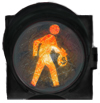Red Light Cameras
1. Yellow Light History and Math |
2. Errors and Omissions |
3. Legal Problems |
4. Yellows Explained w/o Math |
5. Red-Light Cameras Clips |
6. Funny yet True |
Two groups of people come to this site. The first group are drivers who receive red-light camera tickets. They want to know if the tickets are legit. The second group are traffic engineers. The engineers want to know whether there are significant errors in their calculation of the yellow light duration. The answer for both groups is, "The tickets are unlawful because of the significant errors in the math. These errors which force drivers to run red lights put the public in harm's way. The creation of the errors and the instruments to capitalize on the errors, are violations of the State's Engineering Practice Act."
We do understand that ticket recipients are concerned more with the suspicious-looking citations than with engineering malpractice. We know that the citation bears the logo of the local police residing at an out-of-state address. We know that the citation demands money from the vehicle owner and presumes guilt until the owner blames someone else. But these things, as heinous as they are, are a ruse to the real game being played behind your back. It is the game of engineering malpractice where government, red-light camera vendor and IIHS conspire to create criminals for a profit. Remove the engineering malpractice, and there would no longer be red-light camera citations.
![]()
Red-light camera programs are a charlatan fraud scheme profiting from bad physics. The cameras exploit the pseudo-science traffic engineers use to miscalculate the duration of the yellow light. The miscalculation always shorts the yellow light. The shortness is just a matter of degree. The miscalculation creates systematic unavoidable red-light running and crashes. The miscalculation exists at every signalized intersection because the engineer is following a national standard of practice. When you hear a traffic engineer justifying his yellow lights by saying "We just follow the ITE practice", know that he just confessed to making everyone run red lights. The Institute of Transportation Engineers practice is the problem. The ITE practice is the standard, but it is a standard of practice which falls short of a lawful standard of care. A lawful engineering standard of care is proper applications of physics that safeguard the public. The ITE practice is misspplication of physics which harm the public. It is very rare in the professional services that a standard of practice is not a standard of care. But this is one. Watch video 3.
Believe it or not, you have experienced the bad physics while driving. The engineering defect called the dilemma zone is the outcome of the bad physics. A dilemma zone is a segment of road upstream from the intersection where if you are in it when the light turns yellow, you neither have the distance to comfortably stop nor the time to reach the intersection before the light turns red. You react to a dilemma zone by not knowing whether stopping or going would be appropriate, or by choosing to beat the light or slam on the brakes. Sometimes there is no stop or go solution. You must run a red light no matter what you choose. Over 90% of red-light camera tickets result from dilemma zones. Watch video 4.
Where the math errors most oppose the physics of traffic motion, the most red-light running and crashes occur. For turning traffic and for commercial vehicles, the math errors are at their worst. The math can make drivers enter the intersection long (~ 5 seconds) after the light turned red. These two groups experience the most T-bone crashes. Learn the math and the physics. Watch videos 1 and 2.
Video 3 is a must for attorneys. Video 3 presents the legal argument that making math mistakes is illegal. Video 3 introduces the "Engineering Practice Act." Engineers who miscalculate of the yellow light duration violate the Act. Because these engineers are mishandling basic physics, they lack the education required by the State's engineering license. The lack of education triggers the incompetence clause.
There is second level of engineering malpractice. The unlicensed practice of engineering. This is done by the red-light camera firms. A "red-light camera installation plan" is a complex document that includes both professional engineering and professional land surveying elements. A plan cannot be executed unless the plan is first certified. A plan is "certified" when it has been signed and sealed by a State licensed professional engineer who oversaw the project. In all States, a "P.E." must take personal responsibility for the contents of the plan by certifying the plan. Without certification, there can be no installation. And of course, there can be no operation of the cameras without the cameras first being installed. Certification precludes operation. It appears that unlicensed practice of engineering is the norm for red-light camera firms. See video 3 for examples of uncertified plans.
Video 5 shows what a typical "red-light violator" really looks like in the eyes of a red-light camera firm. The video makes a mockery of your assumptions about red-light runners. Red-light runners are not the reckless scofflaws we have imagined. Instead they are safe innocent drivers like you and me who unfortunately happen to be in a dilemma zone when the light turns yellow. Each day millions of drivers find themselves in such a predicament. They enter the intersection a fraction of a second into the red, incursions perceivable by computer only, not by driver or policeman. These drivers are whom red-light camera firms target. Because showing multitudes of such petty clips to a city council would sour its interest, the firms present only the rare video clips of cross-street T-bone crashes. Those T-bone clips are dramatic. Those clips instill fear. Those clips scream out to the council members to take action. Yet only 1 of 100,000 clips are such T-bones. The crimes committed by the red-light camera firms here are false advertising and false pretense. Safety is the false pretense. Cameras have nothing to do with safety.
When all is said, we see classic charlatanism. The red-light camera never solves the problem because it applies treatments to the driver. But drivers are not the ones with ailments; traffic engineers are. The cure is physics lessons and humility. The camera is snake-oil. It is a nostrum. The red-light camera firm is the old-time medicine show operator coming to town, selling oil and leaving. And for millions of dollars of new revenue, the city council gladly becomes a shill.
For a laugh, watch video 6. Video 6 was produced by Blame Society--a Wisconsin comedy company. Blame Society's video tells the story of Cary, North Carolina's red-light camera program.
![]()
Raleigh Shuts Down Red-Light Camera Program
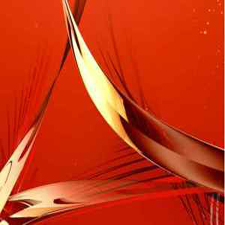 |
Raleigh Shuts Down its Red-Light Camera Program. March 1, 2024 was the last day. Raleigh stopped accepting payments for any outstanding Safelight citation as of March 1, 2024. The City Manager's memo (link on left) mentions legislation that is the impetus to shut down the cameras. It is talking about House Bill 198 written by the NCDOT. |
 |
Greenville and Fayetteville shut down their red-light camera programs. November 15, 2022 was the last day. In March 2022, the North Carolina Appellate Court unanimously decided that the City of Greenville was engaging in an illegal scheme to fund its red-light camera program--that the scheme violates the NC Constitution. Read the ruling to the left. Greenville appealed the case to the NC Supreme Court. The NC Supreme Court heard the case in February 2024. The Court has not ruled yet. |
![]()
ITE Partially Corrects Yellow Change Interval
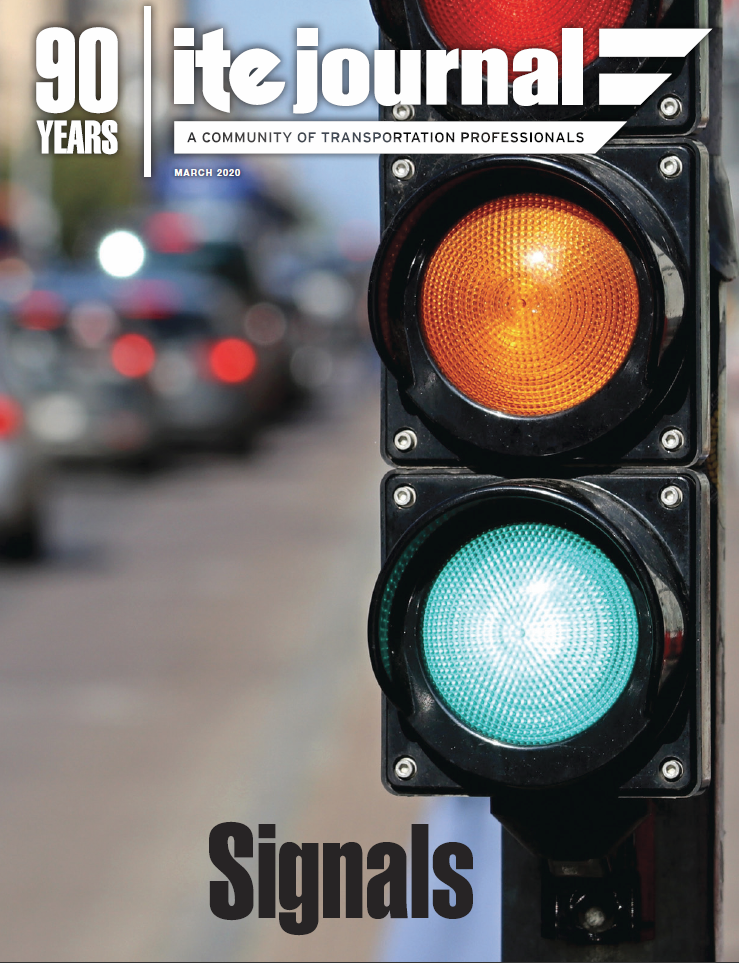 |
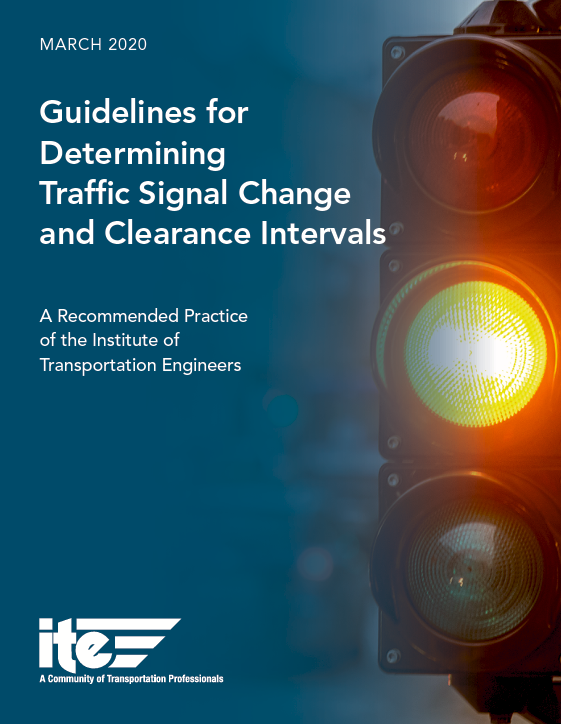 |
The Institute of Transportation Engineers (ITE) is a private organization that establishes the practices Departments of Transportation use to set the length of the yellow light. Since 1965, ITE has been publishing a practice that causes every driver in common scenarios to inadvertently run red lights. Over 90% of red-light running is caused by ITE's errors and omissions. About 9.99% of the remaining 10% are caused by traffic engineering defects other than the yellow light.
After 20 years of confrontation, on March 3, 2020, my colleagues and I led ITE to confess that its practice has been wrong. That the practice has killed or injured millions of drivers. As the first step, ITE chose to correctly apply the mathematical works of Dr. Alexei Maradudin (1960-2018), and to newly adopt the mathematical works of Dr. Chiu Liu (2002), Brian Ceccarelli (2010), Jay Beeber (2012) and Mats Järlström (2013).
 |
Jay Beeber, Alexei Maradudin and Mats Järlström
The ITE Journal contains an article by Jay Beeber. Beeber correctly explains Järlström's extended kinematic equation. Beeber's explanation is 100% accurate not only about Järlström's equation, but also about the underlying physics principles of what a yellow light is supposed to be. Beeber also includes brief treatises on the requirements for engineering tolerances for law enforcement and the correct application of physics dynamics for the road-grade adjustment.
You may download the Excel spreadsheet to compute the new official yellow change intervals. I included the yellow change intervals for commercial vehicles so that one can see the range of valid yellow change intervals which accommodate all allowed drivers on the road. ITE now officially acknowledges a valid range of perception-reaction time and deceleration values, not just the one average value for passenger sedans on dry pavement. ITE does make a strong statement that zero-tolerance by red-light camera firms is bad.
The Guidelines document, though it gets the formula right, leaves 4 other errors in tact. (Watch video 2 above.) Also one can read the ITE Guidelines and construe use-cases that undermine the physics.
It is important to know that traffic engineers are not legally bound to use the Guidelines. ITE has no legal authority. ITE is a private firm, like Walmart. However there is one exception. The State of Virginia has a statute requiring traffic engineers to use the ITE practice. This exception is actually illegal itself. An attorney can argue that the statute conflicts with the State's Engineering Practice Act. Engineering is supposed to be determined by engineers, not legislators.
Traffic engineers have been using the bad ITE formula since 1965. Even though ITE has corrected its formula, States' traffic engineers will not implement the correction. Implementation means confession. Confession means liability for having killed hundreds of thousands of people, physically injured millions and financially ripped-off hundreds of millions via photo-enforcement. The engineers rather harm others than humble themselves. Astonishing as this sounds, as recorded in depositions on this web site, most traffic engineers neither know basic physics nor believe in physics. Those few that understand physics are gaslighted by their peers. Such ignorance, beliefs and unwillingness to safeguard the public's life, health and property, are all criminal acts for licensed professional engineers according to the engineering practice statutes.
![]()
Physics and Math
 |
The Problem of the Amber Signal Light in Traffic Flow; Gazis, Herman, Maradudin Gazis, Herman and Maradudin (GHM) co-authored this paper in 1959. In 1965 ITE miscopied this paper's equation 9 into its Traffic Engineering Handbook. By omitting GHM's "Analytical Considerations", ITE has been instructing traffic engineers to abuse this formula for over 50 years. |
 |
Determination of Left-Turn Yellow Change and Red Clearance Interval, Liu The American Society of Civil Engineers (ASCE) Journal of Transportation Engineering published Dr. Chiu Liu's paper in 2002. This paper is the follow-up work to Gazis, Herman and Maradudin. Dr. Chiu Liu's formula computes the minimum yellow duration which allows all traffic to move legally. Chiu's formula is equation 13 on page 454. The beginning of the paper states explicitly that the turn lane yellows must be longer than the straight-through. The new ITE guidelines say that Liu's turn lane yellows will be shorter than the straight-through. |
 |
Järlström's Extended Kinematic Equation Explanation, Beeber, ITE Journal Mats Järlström's equation is for both right and left turning. This article appears in the March 2020 issue of the ITE Journal. It is a perfect explanation of both Järlström's equation, the purpose of the yellow light, and the general principles of tolerances and when it is correct to use the grade adjustment. |
 |
Extended Kinematic Equation, Järlström This is Mats Järlström's technical paper describing his turning equation. The GPS/Race-Logic data Järlström uses profiles a right-turning vehicle's approach to the intersection. It is beautiful. One can visually compare reality with his equation of physics. Järlström's equation models a different type of vehicle approach than Liu's equation. Yet both equations are correct. The equations yield similar values. Using either equation is good practice. Järlström's equation has the added benefit of capping the yellow change interval to the stopping time--which would be the time it takes a driver to make a U turn. |
 |
Average Deceleration vs Approach Speed, Gates & Järlström This plot shows that average deceleration is a function of approach speed. The conclusion is simple: deceleration "a" is not a constant. The blue line is ITE's value for "a". For the NCDOT, move the line up to 11.2 ft/s/s. The red line represents the average deceleration as a function of approach speed. Anyone below the line is forced to run a red light. An engineering spec cannot use blue or red lines. While the lines are interesting, they do not accommodate all legally-allowed traffic. In the real world, deceleration is a range of values. Deceleration is not a constant as you see in the blue line. Deceleration is not a constant at a specific approach speed either. Deceleration is always a range of values even at a specific approach speed. Applying "average" (a stochastic method) is a misapplication of stochastic methods. The engineer must accommodate all the drivers on the road, not just average ones. (Illustration: a bridge engineer supports all vehicles traversing his bridge, not just the vehicles of average weight or less.) As far as interesting goes, one can see that the faster the approach speeds, the quicker average vehicles decelerate. The break-even speed for the ITE blue line is 38 mph. Remember, however, one cannot use the ITE value or the red-line without forcing good drivers to run red lights. |
 |
Yellow Change and All-Red Clearance Equations of Physics, Ceccarelli This paper lists the physics equations which allow different types of traffic movements to legally enter an intersection. Equation 14 differs from Liu and Järlström. Equation 14 models the velocity/distance profile for the fastest turning approach into the intersection. Liu's and Järlström's equation models the profile for the slowest turning approach. |
 |
Derivation of the ITE Yellow Change Interval Formula, Ceccarelli This paper shows the mathematical steps to derive the yellow change interval formula, both the ITE through-movement and Liu's equation from F= ma--Newton's second law of motion. The paper describes the physics and the assumptions. |
 |
Uncertainty in the Yellow Change Interval, Ceccarelli In the presence of the misapplication of stochastic methods, like using the average perception/reaction time or 50th percentile deceleration, one must compute tolerances for the yellow change intervals so that law enforcement does not punish drivers entering the intersection on red within the uncertainty of engineering calculation. The method to do this is called error propagation. This paper describes the mathematical technique of propagating errors. Typical tolerances range from about +/- 2.0 to 3.5 seconds. It is the responsibility of the traffic engineers, not the red-light camera industry, to compute the tolerance. The red-light camera grace period must be at least the tolerance. |
 |
The Yellow Change Interval: Five Major Engineering Errors and Omissions, Ceccarelli This paper explains the five major ways traffic engineers as a profession misapply the physical and mathematical sciences thus putting in harm’s way the life, health and property of the public.
|
 |
Yellow Time: Contrast between Practice and What is Required, Ceccarelli How much yellow time do reasonably-perceptive drivers need? Do commercial vehicle drivers need more time? This chart reveals how traffic engineers systematically short the yellow for reasonably-perceptive drivers and for various of types of vehicles. |
 |
Misapplied Physics in the International Standards that Set Yellow Light Durations Forces Drivers to Run Red Lights, Ceccarelli This paper describes the formula, what it does and how today's traffic engineers misapply it. This paper also presents red light camera citation data showing how minor changes in yellow light durations dramatically and permanently affect red light running counts. |
 |
Letter Condemning ITE for Misapplying His Formula, Maradudin This is a letter (July 2015) from Professor Alexei Maradudin, the last surviving inventor of the yellow change interval formula. In an upcoming yellow light guideline which ITE is about to publish (called the RP), ITE misquotes Maradudin. Maradudin does not take kindly to that. Maradudin does not like ITE misapplying his formula to turning motions and to any motions impeded within the critical distance. Maradudin does not like that ITE intentionally and knowingly forces drivers to run red lights by establishing a standard which sets the speed used in the formula to values less than the posted speed limit. |
 |
Dos and Don'ts of the Yellow Change Interval Formula, Maradudin This is a letter (July 2013) from Professor Alexei Maradudin, the last surviving inventor of the ITE yellow change interval formula. Every Department of Transportation in the world does the don'ts which cause drivers to inadvertently run red lights. |
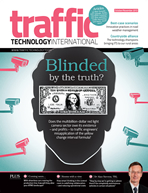 |
Does the Multibillion-Dollar Red Light Camera Sector Owe Its Existence - and Profits - to Traffic Engineers' Misapplication of the Yellow Change Interval Formula?, Ceccarelli, Shovlin Traffic Technology International, a London-based journal, published this cover story about red light cameras exploiting the faulty ITE equation in its October/November 2013 issue. This story summarizes much of the literature on this web site.
|




|
Animations Illustrating the Problem by Johnnie Hennings, P.E., Accident Reconstruction Analysis, Inc., Raleigh. The animations are to scale and true to the laws of physics. In the animations you will see the "critical distance". The critical distance line marks the closest point to the intersection where the driver can still stop safely and comfortably. The line is the point of no return. By federal guideline the amount of time the light is yellow equals the time it takes the driver to traverse the critical distance on the precondition that he travels at the speed limit. You see this fact play out watching the straight-through unimpeded drivers in the following videos. But notice how the yellow will be too short for turning and impeded drivers.
Most States implement a shorter turn lane yellows than through-movement lanes. This demonstrates that traffic engineers do not understand the kinematics of the ITE yellow change interval formula. A new federal guideline called NCHRP 731, formalizes the implementation of the error. One of the 731's authors is Richard Retting, the father of the red light camera industry in America. |
 |
I-Team: Are Yellow Lights Too Short When Making Turns? ABC WTVD, Channel 11, Raleigh, NC: May 5, 2014. This newscast includes an interview with Dr. Alexei Maradudin, the inventor of the yellow change interval formula. Maradudin rebukes DOTs all over America for their misapplication of physics. Kevin Lacy, a spokesman for the NCDOT, responded to ABC. Lacy claims that there is no deterministic equation which models all traffic. Lacy is wrong. The deterministic equation not only models all traffic, but all objects in the universe. It is a = v/t, eq. 41 here, of Newton's second law of motion. The equation for turning traffic is eq. 13 here. The red light camera empirical data proves that the deterministic equation is the solution. That should be expected. Everyone (other than traffic engineers) have known about this equation since 1687 when Isaac Newton discovered it. Johnnie Hennings, P.E., an accident reconstructionist, wrote a rebuttal to Kevin Lacy's/NCDOT's letter. |
![]()
Television Newscasts
